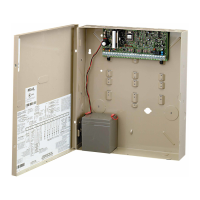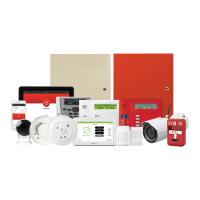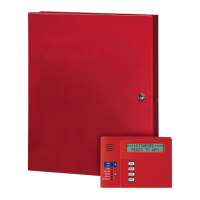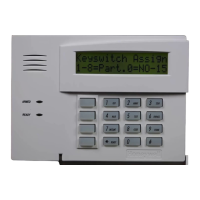Why does my Honeywell VISTA-15P panel revert to Stay mode after arming Away?
- FflopezSep 3, 2025
If your Honeywell Security System panel reverts to Stay mode after arming Away, the Auto Stay feature is likely enabled in *84 by default.




Why does my Honeywell VISTA-15P panel revert to Stay mode after arming Away?
If your Honeywell Security System panel reverts to Stay mode after arming Away, the Auto Stay feature is likely enabled in *84 by default.
What does 'Check 107 – 111' mean on my Honeywell VISTA-15P Security System?
The 'Check 1XX' error (where XX represents the 4219/4229 address) on your Honeywell Security System indicates a potential issue with the expander. If the zones are functioning despite the error, the cover tamper may not be engaged. If the zones are also in a 'Check' state, the expander has likely lost ECP communication with the panel. If there are no expanders on the system and no zones are enabled, check all 16 outputs in *79 and delete any that are enabled for the address in trouble.
What does 'Check 112 – 115' mean on my Honeywell VISTA-15P?
The 'Check 112 – 115' error on your Honeywell Security System, referring to the 4204, indicates either a tamper condition or a loss of ECP communications. If the relays are not working, the 4204 has likely lost ECP communications with the panel. If the 'Check' exists and there are no relays on the system, check all 16 outputs in *79 and delete any that are enabled for the address in trouble.
Why is my Honeywell VISTA-15P wireless not working, working intermittently, or delayed response?
If your Honeywell Security System's wireless functionality is inconsistent, it might be due to having two receivers connected to the system. Watch the red LED on the receiver to see if it flashes when a transmitter is triggered.
What does 'Check 103 XXXX' mean on my Honeywell VISTA-15P?
To diagnose a 'Check 103 XXXX' error on your Honeywell Security System, connect an alpha keypad. This will display 'Check 103' along with a 4-digit code, which will help identify the specific problem with the communicator.
| Control Panel Type | Hardwired |
|---|---|
| Zones | 8 |
| Partitions | 1 |
| User Codes | 48 |
| Keypads | Up to 8 |
| Event History | 100 events |
| Event Log | 100 events |
| Communication | Phone line, Cellular |
| Wireless Compatibility | Honeywell 5800 series wireless devices |
| Battery Backup | 7Ah |
| Outputs | 2 |
Provides a general overview of the Honeywell security system's capabilities.
Covers core functionalities like burglary, fire protection, and security codes.
Details how to arm, step-arm, and disarm the system.
Explains remote system control via telephone.
Describes Alpha and Fixed-Word keypads and their features.
Details the purpose and operation of specific keypad keys.
Explains LED indicators and message displays on keypads.
Manages time for arming/disarming and alarm avoidance.
Verifies all zones are closed or bypassed.
Explains STAY, AWAY, INSTANT, and MAXIMUM arming options.
Procedures for disarming and clearing alarm states.
How to exclude specific zones from arming.
Using chime alerts for door/window openings.
Activating emergency responses via designated keys.
Creating and using macros for automated sequences.
Configuring automatic and manual pager notifications.
Managing user access and permissions.
Managing and arming multiple system partitions.
Automating system actions based on time.
Recording, viewing, and understanding system events.
Performing weekly checks for proper operation.
Identifying and resolving system issues and faults.
Routine care, cleaning, and battery replacement.
Details residential fire detection and alarm functionality.
Procedures to manage fire alarm events.
Guidelines for fire escape routes and safety.
A summary of basic system operations.
Overview of system sounds and display messages.
Compliance information and safety precautions.
Potential failure points and operational constraints.
Details the product's warranty coverage.











